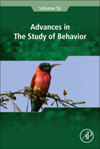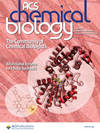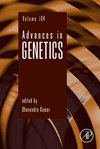期刊简介
PLOS Computational Biology features works of exceptional significance that further our understanding of living systems at all scales—from molecules and cells, to patient populations and ecosystems—through the application of computational methods. Readers include life and computational scientists, who can take the important findings presented here to the next level of discovery.Research articles must be declared as belonging to a relevant section. More information about the sections can be found in the submission guidelines.Research articles should model aspects of biological systems, demonstrate both methodological and scientific novelty, and provide profound new biological insights.Generally, reliability and significance of biological discovery through computation should be validated and enriched by experimental studies. Inclusion of experimental validation is not required for publication, but should be referenced where possible. Inclusion of experimental validation of a modest biological discovery through computation does not render a manuscript suitable for PLOS Computational Biology.Research articles specifically designated as Methods papers should describe outstanding methods of exceptional importance that have been shown, or have the promise to provide new biological insights. The method must already be widely adopted, or have the promise of wide adoption by a broad community of users. Enhancements to existing published methods will only be considered if those enhancements bring exceptional new capabilities.
PLOS计算生物学的特色是通过计算方法的应用,在所有尺度上加深我们对生命系统的理解--从分子和细胞,到病人群体和生态系统。读者包括生命科学家和计算科学家,他们可以将这里呈现的重要发现带入下一个发现层次。研究文章必须声明为属于相关章节。有关各章节的更多信息,请参阅提交指南。研究论文应模拟生物系统的各个方面,展示方法和科学的新奇,并提供深刻的新生物学见解。一般而言,通过计算进行生物学发现的可靠性和重要性应通过实验研究进行验证和丰富。出版物不要求包含实验验证,但应尽可能引用。通过计算对适度的生物学发现进行实验验证并不能使手稿适合PLOS计算生物学。专门指定为方法论文的研究文章应该描述已经证明的特别重要的杰出方法,或者有希望提供新的生物学见解。该方法必须已经被广泛采用,或者有被广大用户广泛采用的承诺。只有在现有已发布方法的增强功能带来新的卓越功能时,才会考虑对这些方法进行增强。
《PLoS Computational Biology》期刊已被查看: 次









